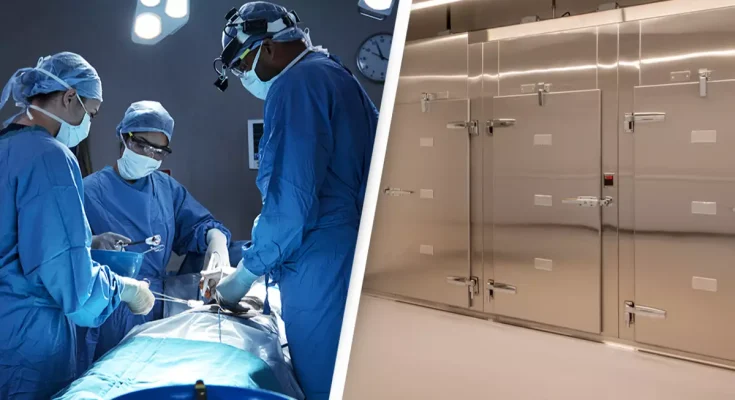The practise is considered a pseudoscience but plenty of people have taken part
The idea of freezing your body with the hope of defrosting again in the future is something straight out of a sci-fi movie, but it’s not entirely limited to fictional worlds.
What is cryonics?
As horrifying as it might sound to some people, having your body frozen after you die is something that people have been willing to do in the past – but it’s not just a case of being put into a freezer and shutting the door.
In contrast to cryopreservation, which is when cells, organs, and sometimes even whole organisms can cooled and revived from extremely low temperatures, cryonics is the attempt to preserve the human body.
Cryopreservation can happen in nature, but in the hope of reviving a human, there’s a lot more science involved.
The body must be cooled and placed into liquid nitrogen, which is stored in a container known as a Dewar.
According to Big Think, the head of the patient is facing downwards in the Dewar to keep the brain at the coldest and most stable point.

When did people start freezing their bodies?
When it comes to human experiments, there’s always got to be some guinea pigs, and for cryonics, those people came in the late 1960s.
Scientists testing the process would prepare and cool corpses on dry ice before they were put into the Dewar capsules, with the largest operation running out of a cemetery in Chatsworth, California by a man named Robert Nelson.
Nelson initially attempted to freeze patients on a bed of dry ice, but he moved to liquid nitrogen when that proved futile.
He had one Dewar capsule and four patients, but he managed to fit them all in and lowered the capsule into an underground vault, where it stayed until Nelson stopped receiving money from the relatives of the patients involved.
After that, Nelson let the bodies thaw out.

What happened to the other cryonics patients?
Unfortunately, the tale of the four thawed-out patients is not a unique one.
According to Big Think, three further patients were thawed out by Nelson when the liquid nitrogen system in one Dewar failed, and a six-year-old boy who was frozen in 1974 ended up being thawed out and buried after his body was found to be cracked.
In New Jersey, where other cryonics work was being carried out, the Dewar used to hold the bodies was poorly designed and had uninsulated pipes, leading to patients being partially or fully thawed on more than one occasion before being re-frozen.
A year after the initial incidents in New Jersey, the Dewar failed again, and the bodies decomposed into fluids which had to be scraped out of the capsule.
Of all the bodies frozen before 1973, there’s just one body that’s still preserved – that of Dr James Bedford, who was 73 years old when he was frozen in 1967.

What are people saying about cryonics?
After learning of the fate of so many of the earliest cryonics patients, people on Reddit were left horrified at the conditions their bodies went through.
One person commented: “I didn’t notice my freezer had gone out until it started to get really smelly. I had to refreeze everything so I could get it into trash bags without throwing up. It had to have been multitudes worse when it was heads and bodies.”
Another added: “Imagine blowing all your savings on this, just to be treated like chicken breast with freezer burn…”
Are people still being frozen?
Though cryonics is widely considered a pseudoscience, there are more recent examples of people being frozen, including one example which took place in May 2024.
A man from Sydney became the first in Australia to have his body cryogenically frozen, spending $170,000 AUD ($112,285 USD) with the hope of being brought back to life.



